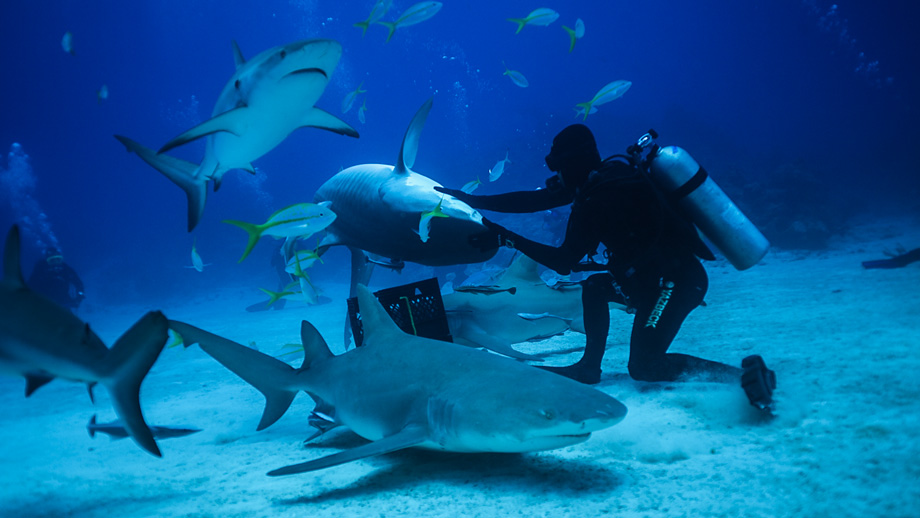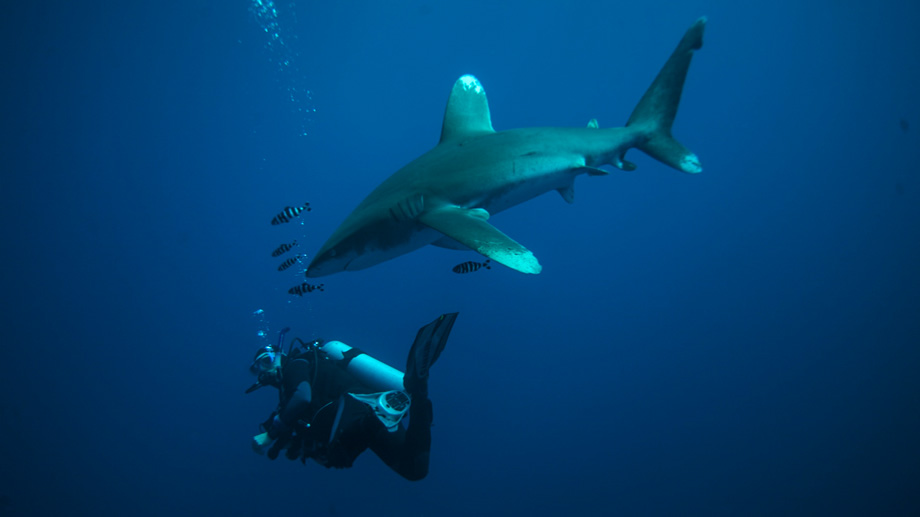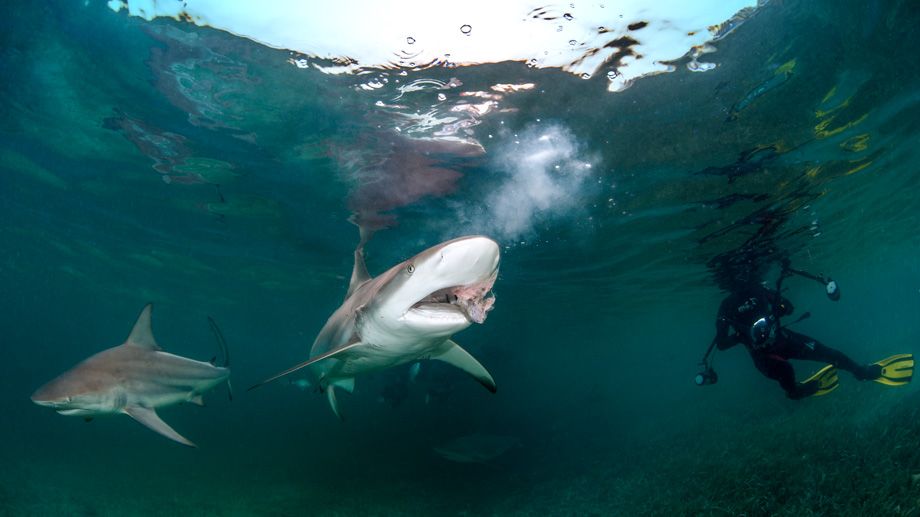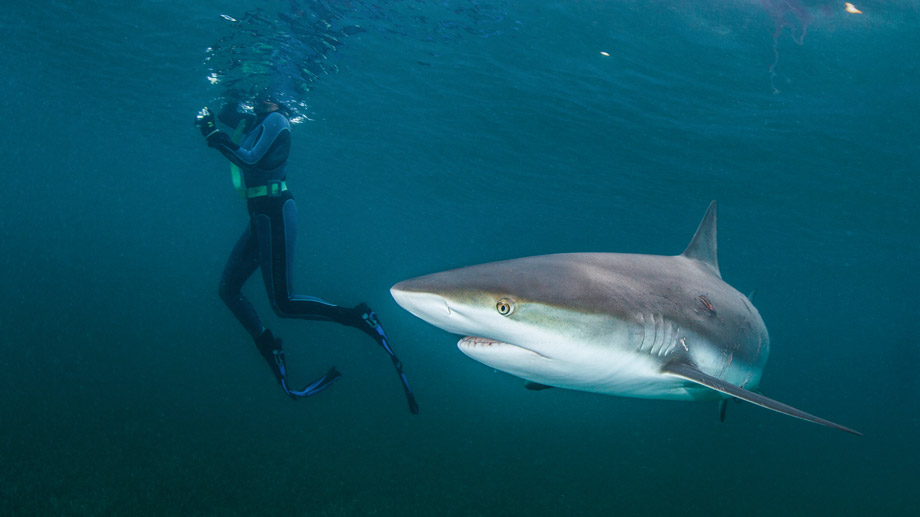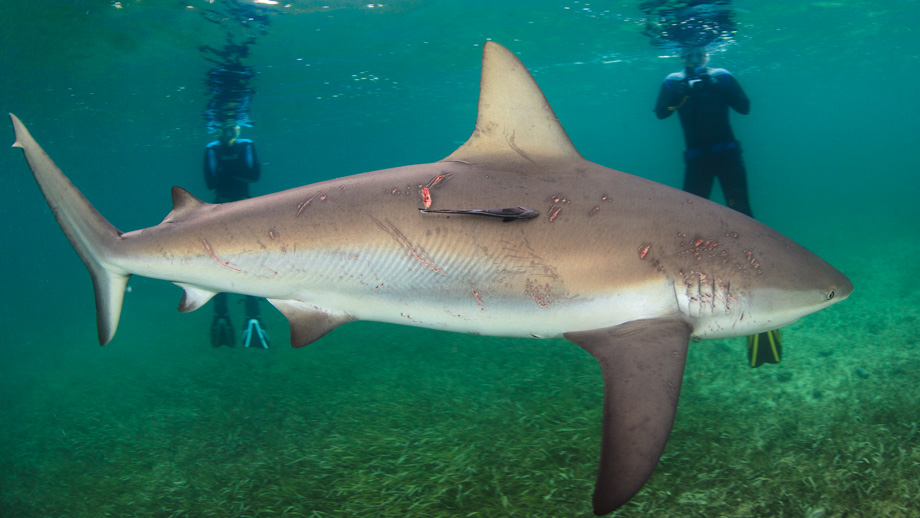Workshops
You can hear it a hundred times, and it is still not as good as having seen and felt it one time. Our workshops are held all over the world. No matter what workshop or seminar you choose - Interaction I, II, III, "Act, React & Rescue" or others - it always revolves around shark-human interaction. For a full list of all workshops/seminars offered, go to our SharkSchool site.
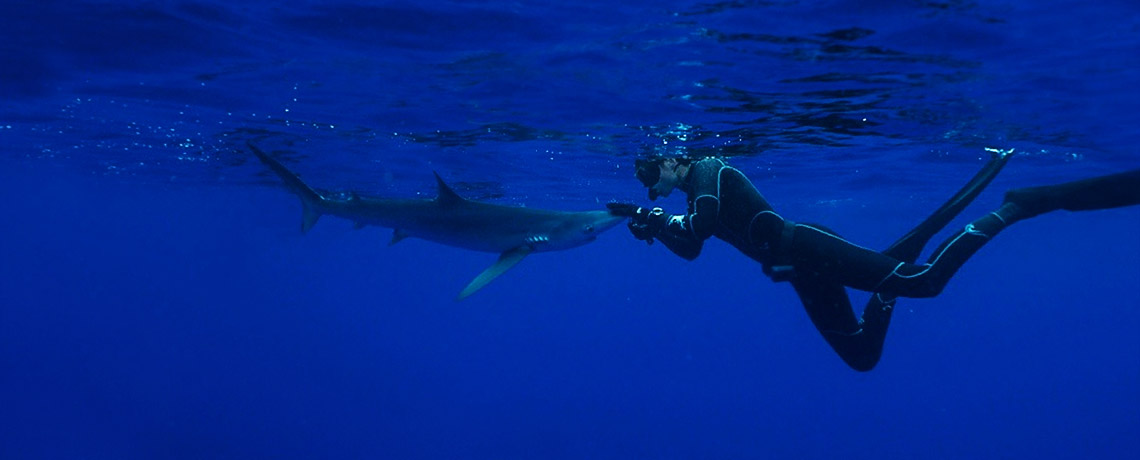
Interaction I
This workshop focuses on the different interaction aspects when dealing with sharks. It will be taught what to look for when facing a shark, which factor(s) influence(s) the situation the most, and how to interpret an encounter. Everything learned in the classroom will also be tried and tested with and among free-roaming sharks within changing situations, giving a thorough introduction to different scenarios.
• Introduction to ADORE-SANE
• Daily in-water exercises (related to ADORE-SANE)
• Detailed introduction in shark behavior and interaction with sharks
• Overview of shark accidents, their analysis, and interpretation
• Do’s & don’ts
Interaction II
(Introduction I is a prerequisite to participate).
• Daily lectures on ADORE-SANE
• Daily in-water exercises with to better understand ADORE-SANE
• Additional exercises while snorkeling, freediving, and scuba diving
Interaction III
This is the very intense workshop and is exclusively taught in the Bahamas at the SERC - Shark Education & Research Center. This workshop in Eleuthera is only suitable for people who genuinely want to deepen their understanding between the sharks and us, and how to intensify the interaction with them.
• Daily lectures on particular topics of shark-human interaction
• In-water exercises on shark-human interaction
• Introduction to animal-human communication
• Introduction to the (spiritual) relationships with animals among different cultures
Act, React and Rescue
This course has been specially designed for rescue personnel, coast guards, and other sea watch personnel.
Lectures (flexible duration depending on focal points)
• Detailed introduction to the analysis and reconstruction of shark bites
• Introduction to “constellation of factors”
• Rescue procedures for all in-water activities (mostly one activity/day)
• Daily in-water exercises (day and night) with dummies & people
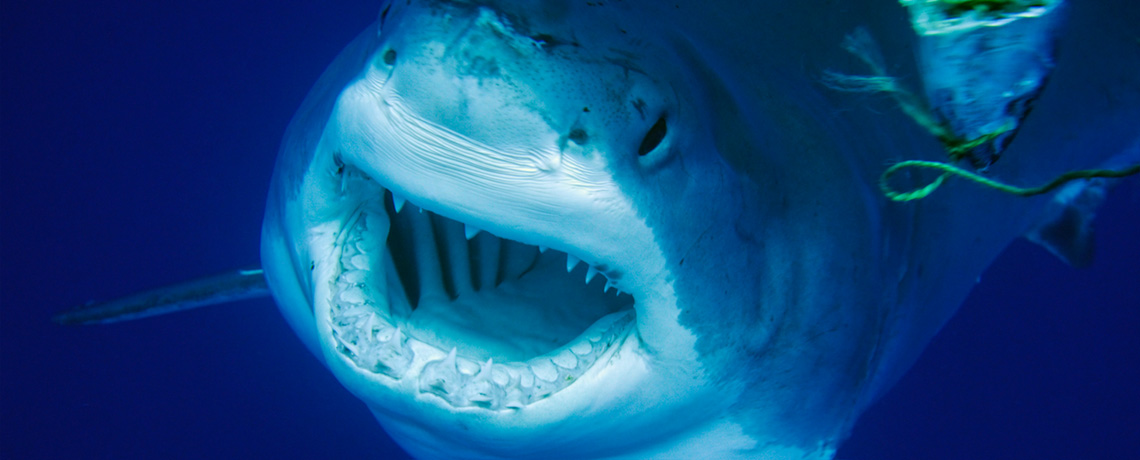
Shark Rescue Rules
Rule: Deal with the shark before attending the victim*.
Reason: A shark’s curiosity over the victim might still be increased, even if it did not bite a second time. Any attempt to rescue the victim can trigger another response from the shark, and the rescuer’s initial task is to secure the situation.
*It is understood that a person might be drowning and immediate help is needed, but most bites are less severe. Hence such is rather the exception to the rule. In these rather rare occasions, a rescuer must deal with a victim while keep facing the shark.
Rule: Is a shark still swimming in closest vicinity to the victim during a rescue attempt, avoid anything that might trigger competition over the victim.
Reason: Despite that a shark does not see anything edible in a person it just bit, there is the possibility that the sudden appearance of another person—together with the attempt to remove the victim—might trigger a “claim response.” A claim response could reflect an establishing of ownership based on initial appearance and exploration; hence a rescue attempt should not commence until the situation with a shark is under control. In its worst form, a claim response leads to a tug-of-war between the rescuer and the shark with the victim in between.
Rule: Approach a victim from behind and then first evaluate the situation.
Reason: A stressed victim can grab you and pull you down, adding problems to the task ahead. If you are grabbed by a victim, submerge, and move away.
Rule: Move in front of the victim should a shark approach again.
Reason: The attempt of biting a victim for a second time is statistically more than just minimal (except, e.g., if a claim response is triggered), but a rescuer must still be capable of fending off the approaching shark hence must position himself/herself in front of the victim (in relation to the shark’s position), and follow the interception and confrontation rules. Although moving a victim from the site can trigger a competitive behavior in a shark, a situation will not escalate as long as the rescuer acts focused and immediately ceases moving the victim when the shark is turning towards the rescuer/victim again (see following rules as well).
Rule: Never move a victim when a shark is approaching.
Reason: Always assume that a shark is still interested in a victim, and the removing of the person, while the animal comes closer, could increase its interest again, and even trigger a claim response. Any moving of the victim should only be commenced when a shark is swimming away from a rescuer/victim or at least swims at a distance that is larger than just a few body lengths.
Rule: Always push the shark off, never pull the victim away
Reason: Pushing the shark off (aim for the gills if possible) will not just be a stronger signal to the shark, but it is also much more relaxed than moving a possibly large and immobile victim. Should a further conflict not be preventable, a rescuer must always focus on the shark first (and follow interception and confrontation rules).
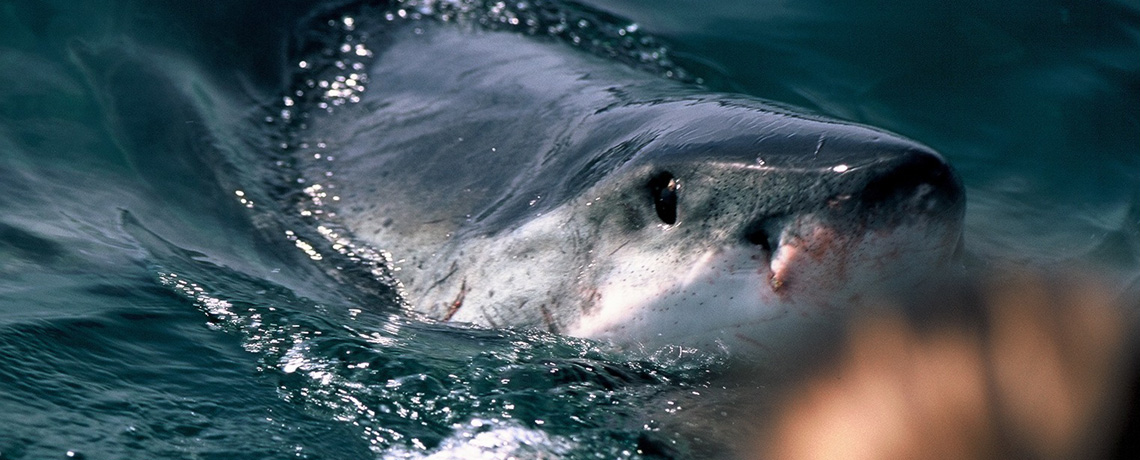
Lifeguard Seminar
SharkSchool™ together, with SAVN™ (Shark Accident Victim Network), offers the most in depth rescue methods for shark accident victims and shark-human interaction techniques available. All recommendations and rescue procedures mentioned have been tested among wild sharks. This seminar is a condensed form of the ‘Act, React & Rescue’ workshop. The seminars cover all types of rescues with special emphasis on beach activities. Lifeguard seminars are specifically tailored to the needs of the particular rescue groups and hence vary in duration (evening and full day seminars available). SharkSchool™ teaches this seminar within the entire US. Some of the topics and questions answered:
- How to read a situation, what to look for
- How to read a shark’s swim pattern
- How to approach a victim when a shark is close by
- Standard rescue procedures
- Wrongful instinct driven behavior of rescuers
- Former rescue missions analyzed
- Different location - different rescue
- Go for it or not: when decisions have to be made
